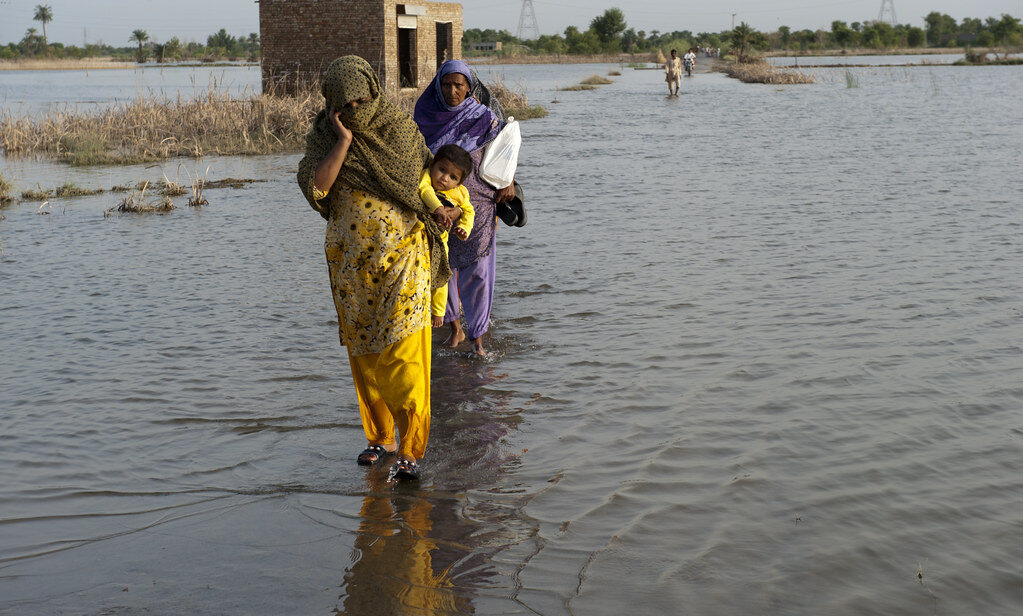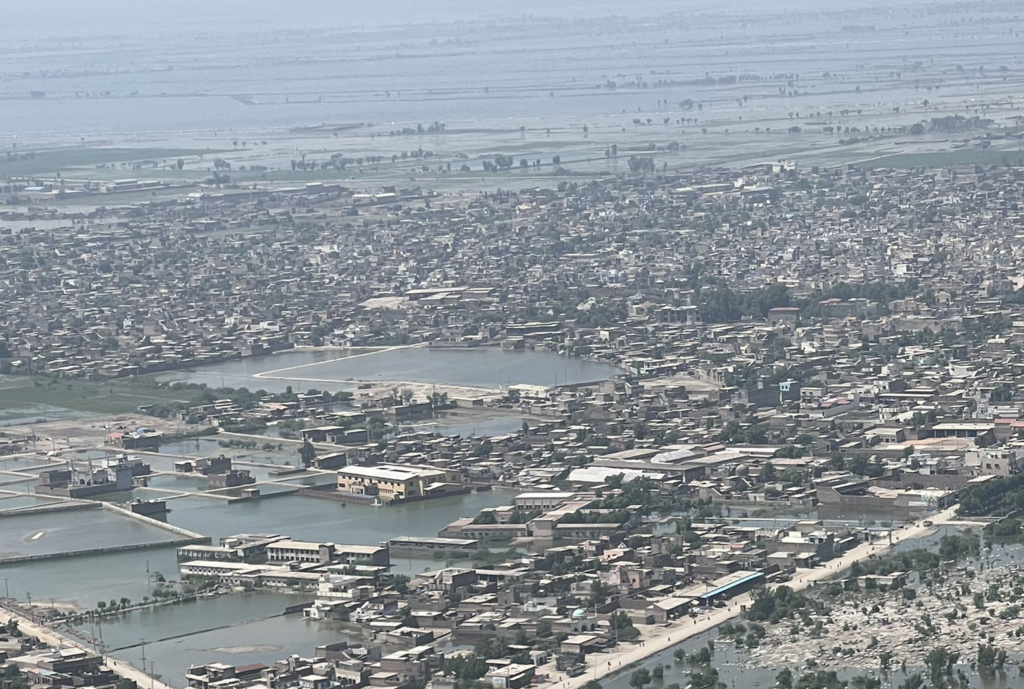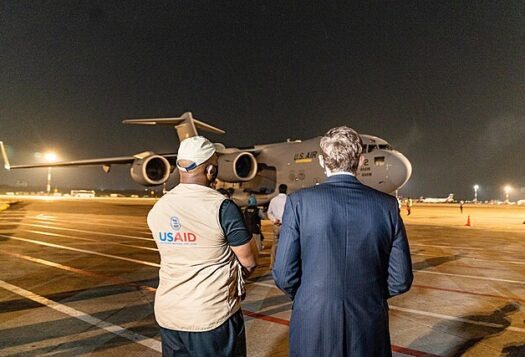
Pakistan’s devastating 2022 floods unambiguously elucidate the stark realities of climate change. The event indicates an existential danger that demands immediate and earnest policy attention. Pakistan’s climate crisis has metamorphosed into a distinctive security challenge—one that deviates from conventional security threats—demanding meticulous and comprehensive strategic considerations. Urgency must underscore the formulation of adaptive strategies, especially the need for urgent climate financing at local community levels.
Adapting to a changing climate necessitates adjusting to present and anticipated climate conditions. Mitigation strategies are not Pakistan’s primary concern, considering the country’s relatively minor contribution to greenhouse gas emissions. Instead, Pakistan should prioritize climate adaptation strategies because climate change impacts are experienced at local levels more profoundly.
Pakistan’s Climate Financing
Pakistan has been vociferously pursuing climate diplomacy throughout the past decade. Pakistan’s Intended Nationally Determined Contribution (INDC) submission to the U.N. in November 2016 reflected efforts to invigorate climate diplomacy as a foreign policy priority despite sporadic international diplomatic efforts at the time. The INDC anticipated increased action in the future, leveraging international climate finance, technological advancements, and capacity-building initiatives. The anticipated increase in climate diplomacy engagement eventually occurred after the 2022 floods.
After the floods, Pakistan became one of the two co-chairs at COP27 in Egypt and represented the G77 umbrella group of developing countries seeking to increase climate financing in poorer nations. The country was critical in getting “loss and damage” onto the official U.N. summit agenda after decades of resistance from richer nations. Pakistan’s support and advocacy for these initiatives underscore the primacy of climate diplomacy in its foreign policy.
“Recharge Pakistan” represents a step forward in compensating Pakistan for the climate crisis. The core objective of this initiative revolves around enhancing Pakistan’s ability to withstand and adapt to the ramifications of global climate change. This initiative has come to fruition through a remarkable synergy of essential participants. The Green Climate Fund (GCF) has taken a significant step by announcing $66 million for the project. The Coca-Cola Foundation, the U.S. Agency for International Development (USAID), and WWF-Pakistan have coalesced their efforts, facilitating a collaborative investment of $12 million while delivering crucial technical expertise. With a comprehensive financial outlay of $77.8 million, the “Recharge Pakistan” project is the largest-ever investment dedicated to bolstering Pakistan’s flood and water resource management through an ecosystem-based approach at a national level.
After the floods, Pakistan became one of the two co-chairs at COP27 in Egypt and represented the G77 umbrella group of developing countries seeking to increase climate financing in poorer nations.
The central inquiry involves determining where and how to deploy the project’s funds. It is essential to prioritize areas most susceptible to climate change’s adverse impacts. “Recharge Pakistan” should be built upon well-defined goals and objectives that are clear and quantifiable. Focal areas in this project include climate-resilient infrastructure projects, water resources management, agriculture, and the forestry sector. Investing in these areas urgently would help foster climate resilience, addressing both environmental concerns and socio-economic considerations.
Addressing future flooding stands out as a top priority, demanding immediate attention. Initiating climate-resilient infrastructure becomes paramount to tackle this challenge effectively. One of the key considerations for climate-resilient infrastructure is to assess the vulnerability of specific areas to flooding and identify potential flood-prone zones. The 2022 flood has had a devastating impact on low-lying plains like those in Qambar and Larkana cities, with areas such as Khairpur Nathan Shah being particularly hard-hit, experiencing widespread inundation.
By utilizing detailed topographic surveys and flood risk assessments, the government can determine areas most susceptible to floods and construct infrastructure—such as roads, paths, tracks, and other essential structures, such as residential and commercial buildings—in a manner that elevates them above flood levels wherever feasible.

Climate Adaptive Strategies
Pakistan is highly dependent on water obtained from rivers, glaciers, and monsoons, which are highly susceptible to climate variability. Improving water storage and usage is crucial for water resource management in the face of water scarcity brought about by climate change. According to the 2020-2021 World Bank report, Pakistan’s projected water scarcity is expected to rise 32 percent by 2025, potentially leading to nearly 70 million tons of food production deficit.
The government should prioritize developing water storage infrastructure to capture and store water during periods of abundance. Promoting efficient water usage through education, awareness campaigns, and incentives can help reduce water waste and ensure sustainable water management practices.
Additionally, Pakistan is currently facing a significant challenge in terms of its forest cover. With only 0.05 hectares of forest per capita—compared to the world average of 1.0 hectares—Pakistan can be considered relatively forest-poor. With the influx of essential financial resources in the “Recharge Pakistan” project, one of the immediate actions in this regard should be replanting and restoring the existing forest areas to protect against soil erosion and help combat flooding.
Diversifying livelihoods is essential to reduce the vulnerability of poor communities that rely heavily on agriculture and natural resources. This requires massive investment in human resources, for which the recent climate finance achievements in the form of “Recharge Pakistan” will be substantial.
Efforts should be made to rehabilitate degraded forests and increase their overall health and productivity. Simultaneously, afforestation initiatives should be implemented to expand the forest cover of Pakistan. It is essential to consider the livelihoods of local communities directly dependent on forests for their sustenance. Diversification of their livelihood options can help reduce their heavy reliance on forests. The pressure on forests can be alleviated by providing alternative income opportunities such as skill development programs or supporting the growth of other industries.
Adapting cropping patterns to leverage the benefits of flood waters can be an effective strategy for agricultural resilience in flood-prone regions. By optimizing planting choices and agricultural practices, farmers can harness the advantages of floodwater to enhance crop yields and promote sustainable agriculture. In Nowshera, farmers implemented autonomous flood adaptation strategies in both flood-affected and non-affected villages within the district. By ensuring proper technical information and support from relevant agencies, many flood-affected farm households stand to gain significant advantages from these adaptive measures. Nowshera’s example highlights the potential for widespread positive impact if government and technical support are extended to assist these communities in effectively adopting flood adaptation practices.
Diversifying livelihoods is essential to reduce the vulnerability of poor communities that rely heavily on agriculture and natural resources. This requires massive investment in human resources, for which the recent climate finance achievements in the form of “Recharge Pakistan” will be substantial. Over-reliance on agriculture makes people more susceptible to the adverse impacts of climate change. By expanding income sources and diversifying economic activities, communities can enhance their resilience and mitigate the risks associated with climate variability.
Efforts should be made to actively engage with local communities, civil society organizations, and other stakeholders to ensure inclusive decision-making processes and to leverage local knowledge and expertise. By involving those directly affected by climate change, the government can better understand the unique challenges different communities face and tailor adaptation strategies accordingly. Furthermore, local communities worldwide have been actively working to solve their climate-related problems, developing innovative strategies and implementing adaptation measures that suit their unique circumstances. Pakistan should learn from these local experiences and collaborate with communities to find context-specific adaptation solutions, while simultaneously engaging in international climate financing initiatives to fund them.
Also Read: Post Flash-Floods in Pakistan: Navigating the Food Crisis and Mapping a Way Forward
***
Image 1: National Flood Emergency Response in Pakistan via Flickr.
Image 2: Flood in Pakistan 2022 via Wikimedia Commons.


